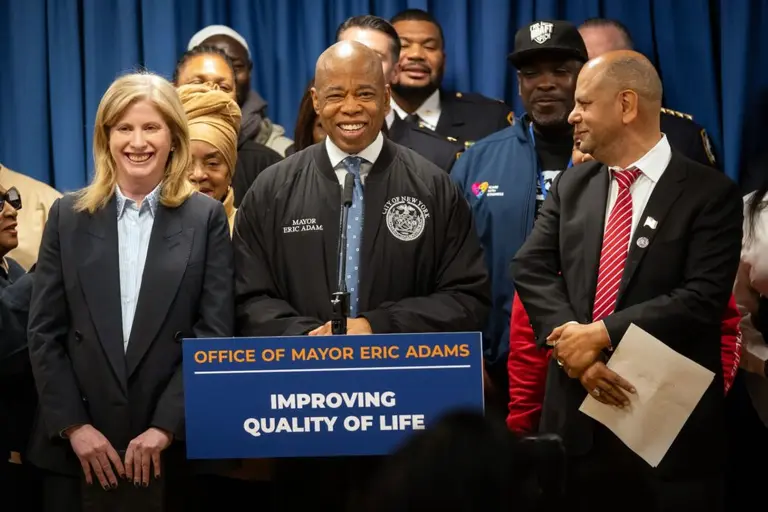Residential buildings replaced nearly half of NYC hospitals shuttered in last two decades

The Greenwich Lane condo building replaced St. Vincent’s Hospital; Photo by Eden, Janine and Jim on Flickr
Why is New York facing a shortage of hospital beds during the current crisis despite having the “best health care system on the planet,” as Gov. Andrew Cuomo claimed? In the last two decades, 18 hospitals have closed in New York City, a loss of more than 20,000 beds. And new health care facilities did not replace the shuttered sites, residential buildings did.

Map created by ANHD
According to a new report by the Association for Neighborhood & Housing Development (ANHD), of the 18 hospitals closed, more than 40 percent have been replaced by residential developments. Two-thirds of these closures occurred in the outer boroughs, particularly in communities of color, whose residents are currently experiencing disproportionate rates of infection and death from the coronavirus pandemic.
Preliminary data released by the city and state this week shows that Hispanic and black New Yorkers are dying at disproportionate rates from the coronavirus. Of city residents who have died from the pandemic, 34 percent were Hispanic and 28 percent were black, communities that make up just 29 and 22 percent of the population, respectively.
A majority of outer-borough hospitals that were shuttered to make way for more housing was built in lower-income communities of color. Without neighborhood medical facilities, many residents lost access to necessary health services.
The report from ANHD points to now-defunct hospitals like St. Vincent’s Hospital in Manhattan, where low-income New Yorkers received care during the AIDS crisis and recently became a luxury condo called Greenwich Lane, and the Long Island College Hospital in Brooklyn, which has since been converted into a condo building called 5 River Park.
Queens, which has been called the “epicenter of the epicenter,” lost St. John’s Hospital, Parkway Hospital, and Mary Immaculate Hospital in the last two decades. St. John’s Hospital, formerly located near Elmhurst Hospital, is now market-rate rental Queens Pointe; Mary Immaculate was converted into housing in 2009; Parkway was closed in 2008 to make way for apartments.
The report places the blame on land use decisions by the city, particularly those made by Mayor Michael Bloomberg’s administration, which oversaw neighborhood rezonings that paved the way for more luxury residential developments. The ANHD argues these land use decisions, paired with continued disinvestment, have led to an unequal distribution of resources.
“Whether it’s access to critical infrastructure, good paying jobs, or truly affordable housing free from the risk of displacement and overcrowding, the failures of our planning processes have exacerbated inequality within New York City in a way that is playing out in life or death terms today,” the report reads.
Read ANHD’s analysis on land use decisions and hospital closures here and explore their neighborhood map of closures and COVID-19 cases here.
RELATED:































